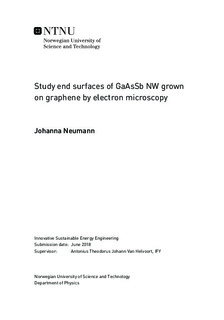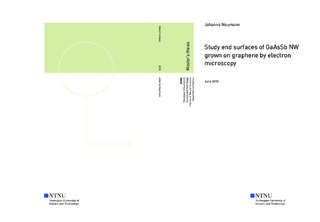| dc.description.abstract | III-V nanowires (NWs) are attractive for solar cells. Through the composition
of the NWs, their bandgap and hence their electronic properties can be tuned, for
example, to optimise absorption so that most of the Sun's radiation is used.
In this study, compositional analysis of Ga-As-Sb, Al-Ga-N, In-Ga-N systems has
been done using Scanning transmission electron microscopy (STEM) and Energy
Dispersive X-ray Spectroscopy (EDS) with the aid of the Python-based Hyperspy
library for a more transparent and possibly better compositional analysis. This
includes setting up an analysis routine based on the quantication method called
zeta method intruduced by Watanabe & Williams, but not available yet in com-
mercial software packages.
The required -factor has been estimated experimentally for the elements Ga, As,
Sb, Al, N, In, C, O, Si on the used JEOL JEM2100F with an 80 mm2 silicon
drift detector and the -method compared to the classical Cli-Lorimer method.
Dierent reference samples with known thickness and composition were used for
this step.
Tilt eects on the zeta-factor quantication were studied with GaAs NWs and
the Ga catalyst droplet of GaAsSb NWs. When the holder was tilted to negative
X-tilts, the -factor increased. In the range between 0o and 35o tilt, the -factors
were constant indicating no detector shadowing.
For calibration and mapping, a positive tilt was used to avoid shadowing eects.
Quantitative compositional maps have been calculated of areas within GaAsSb,
AlGaN and InGaN NWs that contain a heterostructure. These heterostructures
could have a varying thickness or composition in the direction of the electron beam
Using the EDS spectra images, thickness maps could be constructed for areas where
the composition was known.
Further renements to the zeta method have to be made, especially nding good
calibration specimens with exactly known thicknesses. | |

